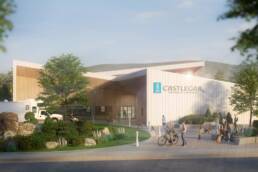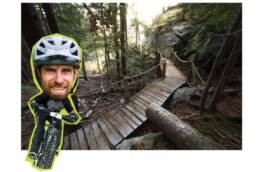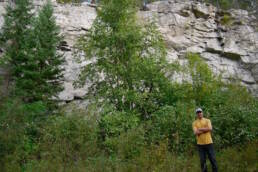Designed by Cover Architecture, the new Confluence building will house the city’s Chamber of Commerce and Visitor Centre while adhering to state-of-the-art Passive House certification.
The Castlegar & District Chamber of Commerce and Visitor Centre has long been one of the first buildings that greets visitors entering the City of Castlegar. It has come time for the structure to be replaced with The Confluence, a hub for tourism and economic development Castlegar and the surrounding area.
The new landmark Chamber of Commerce building for the City of Castlegar is an exciting development with tremendous architectural innovation as it is targeted to be Passive House Certified and of mass timber design.
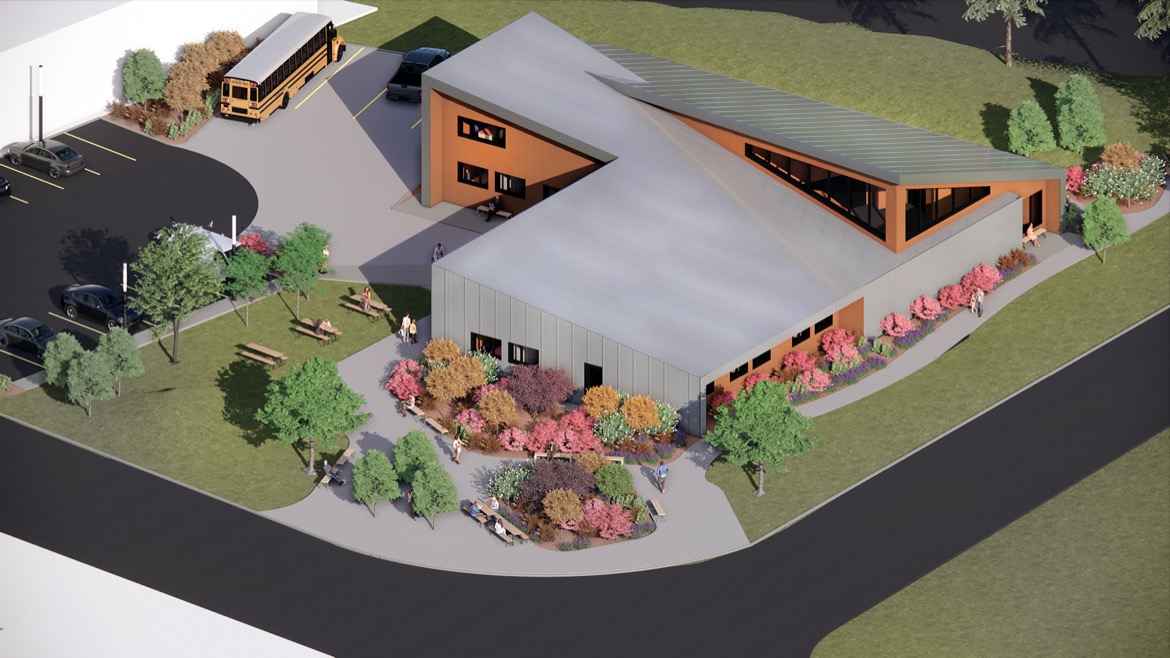
Located at 1995 6th Ave, in the heart of the city, The Confluence will contain the previous programs of the existing Chamber building along with new additions. The Confluence building has a proposed footprint of 725 square meters, which includes office space for the Chamber employees, in addition to a greatly expanded reception/display area for the Visitor Centre, a large bookable conference room, and a “business incubator” (rental office space) with both enclosed and open work areas.
The Confluence is designed with an architecturally expressive exterior. It presents both structural and non-uniform shapes with a consistent material palette to complement its creative framework.
- The roof line is divided by multiple levels which are oriented in different direction, with varying slopes and heights. This roof form is representative of the surrounding peaks. As the roof is a structural feature, no rooftop mechanical equipment will be present.
- Overhangs are created on all sides of the building with arching extensions of the roof line. This unique design characteristic provides a feeling of being under an overhanging cliff face and helps shade building openings.
- The architectural grade standing seam cladding wraps around the building, presenting an articulated and beautiful façade and emphasizing the building form.
- Accent features around window openings will be made from warmer materials with a more natural appearance.
- Any outdoor mechanical units will be incorporated into the overall landscape design. By incorporating them into the landscape, they will be hidden from view.
- Landscaping is an essential part of the architectural design and has been carefully considered throughout the design process. The use of multiple types of paving creates usable public space, appropriate for this junction within the city, and beautifies the seating/garden areas, encouraging public/private use of the property. Plants have been chosen to create a rich and diverse visual environment, with unique features on each building face.
- The interior design of the project is centred on the use of cross laminated timber wall panels, with other wood ceiling and wall features, combined with a minimal aesthetic. This will give a contemporary and timeless feeling to the design.
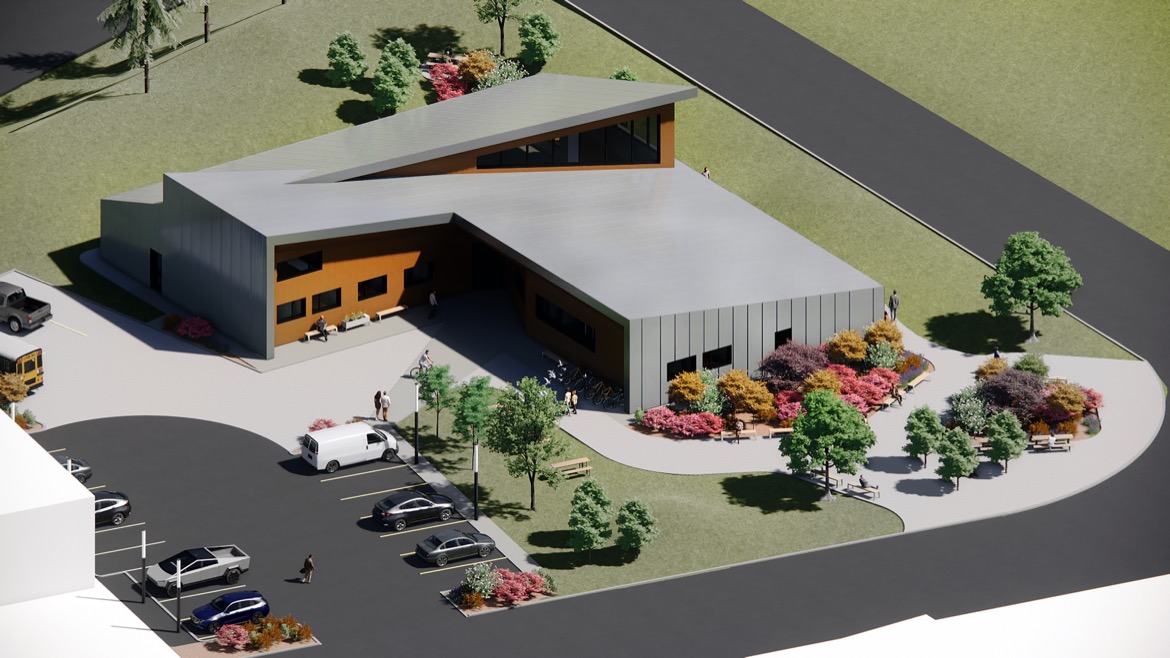
The Confluence is centrally located within the current development of the City of Castlegar and presents a unique opportunity to improve on the existing character of the surrounding area. Architecturally, the design is one of a kind; the form of the building is not only functional and beautiful on the interior but a sculptural icon for the City of Castlegar with high visibility to the public.
To showcase leadership in sustainability, the Confluence is being designed to achieve Passive House Certification, one of the first for this type of building in the country. To support local manufacturing industries, the structure will be largely built from mass timber, provided by Kalesnikoff Lumber Company. The Confluence is set to be a stand-out building within the city of Castlegar, while also fitting itself comfortably within its existing context and surrounding landscape; it will invite multiuse by the community and incorporate sustainable and thoughtful building systems.
ABOUT PASSIVE HOUSE CERTIFICATION
Passive House is one of the most aggressive energy efficiency standards in the world, producing buildings that can be net zero, comfortable, affordable and sustainable, all at the same time.
The Cover team has led the region in developing strategies to reduce building energy consumption, including all levels of Step Code, LEED and Passive House certifications (an international energy standard that can offer up to net-zero levels of efficiency). Site orientation, material selection, interior layout, and detailing have huge potential to positively affect the longevity of the building, as well as the health and well-being of the users/occupants.
The appropriate material and system choices can lead to a building which is easier to maintain, lasts longer, and ultimately decrease its operational budget and maintenance costs.
Cover Architecture believes that Passive House certification is the best strategy for addressing the Climate Crisis within the construction industry, but every project is an opportunity to build better, whether through Step Code, Passive House, or another strategy.

ABOUT COVER ARCHITECTURE
Based in Nelson, British Columbia, Cover Architectural Collaborative Inc. was founded in 2013 by three design professionals: Graeme Leadbeater, Robert Stacey and Lukas Armstrong. Three additional registered Architects, Narelle Sookorukoff, Joanie Madore and Anne-Frederique Paradis, joined the leadership in 2020.
Collectively the firm’s principals and associates have over 50 years of architectural experience. The team of 24 architects, intern architects, architectural technologists, admin support and students bring their education and experience from countries around the world, including the Ukraine, Scotland and Australia.
Since the company’s inception, Cover has completed hundreds of projects across British Columbia and Alberta in a range of sectors including public and community housing, health care, Indigenous-lead projects, multi-purpose, spiritual, community, recreational, commercial and industrial.
Central to Cover’s vision of design is that collaborative decision making can create significantly more robust and integrated results than working as individuals. The team is passionate about collective thinking, integrated design, professional accountability, the responsible use of resources, and a healthy and caring work environment.
SHOUT-OUT TO THOSE INVOLVED IN THE CONFLUENCE
The Confluence wouldn’t happen without the direct involvement of the following:
- Cover Architectural Collaborative
- Kalesnikoff Mass Timber and Lumber Company
- WSA Engineering
- READY Engineering
- Rocky Point Engineering
- PEEL Passive House
- LARCH Landscape Architecture
- Crowsnest Engineering
- Hango Land Surveying
- Steer Environmental
Related Stories
Coast Modern Architecture
I just spend a couple of days at Baldface Lodge following abstract artist Jeremy Down around the mountains while he…
Meet Hickshow Productions
Hickshow Productions is as grassroots as it gets: they're Slocan Valley sleddin' souls who have a scene or two to…
Why Castlegar Should Be On Your Must-Visit List This Fall
On a recent assignment for ZenSeekers, editor Vince Hempsall and photographer Dave Heath travelled Castlegar and the…
Castlegar Rock Climbing Area To Be Saved From Development
A Kootenay rock climbing association has announced it's raised enough funds to purchase the most popular rock climbing…
Castlegar Man Catches the World’s Largest Kokanee…and Eats it
In the recent issue of Kootenay Mountain Culture magazine we wrote about the strange story of Castlegar, British…


